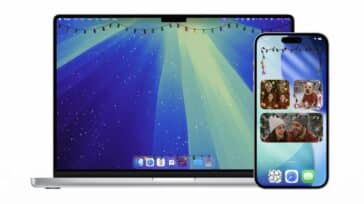Today, I’m going to cover how to monitor your Mac’s memory usage and how to know when you don’t have enough RAM.
Here’s the key tip. This information is found in the Activity Monitor application, specifically the “Memory” tab. This app is in the Utilities folder inside of your Applications folder. Click on the Finder icon in your dock and press Command-Shift-U to go there directly.
Activity Monitor shows all the live processes on your Mac. Every five seconds, it changes as different processes have different needs. By default, it displays CPU usage. Most often you click on “% CPU” to see what is working hardest.
In the Memory section, you should sort by Memory. The list shows how much RAM each process is using. Notice, I said process there and not an application. Some applications, like Google Chrome, run multiple processes (Chrome has a process for each window).
For RAM, we need to focus on the block at the bottom. It’s a summary of how much of your RAM is being used. It’s the section with “Memory Pressure.”
Generally speaking, if it’s green, you’re good. If it’s yellow, your Mac is stressed, and you should start quitting some applications. If it’s red, there’s just not enough RAM. Your memory pressure may momentarily be in the red, but if it happens often, it’s time to buy more RAM or upgrade your system.
When I’m running intensive applications, like After Effects or DaVinci Resolve, I keep the activity monitor open just to keep an eye on the system’s memory usage.
When your Mac runs out of RAM, it starts to push sections in RAM to your storage. The term for that is “swap.” You’re swapping elements in your RAM and paging them out to your storage. And what happens when you switch back to that application? It swaps those memory sections back, paging it back in.
When the MacBook Air debuted, it only had 4 GB of RAM. Why did it feel so fast? Because it would swap in and out of its SSD, making it feel like it had much more RAM.
There is a rule of thumb/tip about Swap Space: You should keep double the amount of physical memory on your storage free for your system to work well.
I’ve got 32 GB of RAM, so I like to make sure I’ve kept 64 GB free on my SSD.
That swap space will grow over time between startups. That’s just from time and a lack of perfect cleanup as you run without rebooting. Typically, I will run for multiple days and I tend to reboot my Mac whenever I notice that my swap space is over a quarter or so of my RAM.
Aside from the Activity Monitor, there are some great third-party utilities like iStat Menus, Sensei Monitor, Stats, and iPulse that give you this information, and more. If I’ve missed your favorite utility or you have other questions, feel free to leave them in the comments.






When you pulled up apps to close, how did you do that? :)